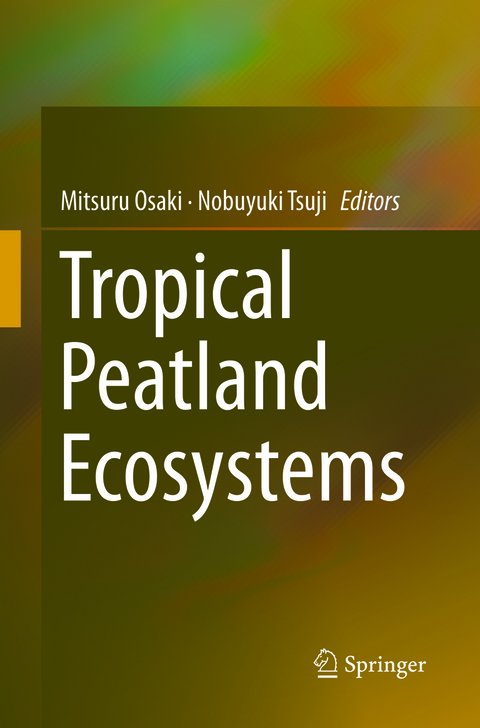
Tropical Peatland Ecosystems
Springer Verlag, Japan
978-4-431-56675-5 (ISBN)
Tropical Peatland of the World.- Changing Paradigms in the History of Tropical Peatland Research.- Peatland in Indonesia.- Peatland in Malaysia.- Peatland and Peatland Forest in Brunei Darussalam.- Peatland in Kalimantan.- Sustainable Management Model for Peatland Ecosystems in the Riau, Sumatra.- Tropical Peat Formation.- Tropical Peat and Peatland Definition in Indonesia.- Forest Structure and Productivity of Tropical Heath and Peatland Forests.- Floristic Diversity in the Peatland Ecosystems of Central Kalimantan.- Peat-fire Impact on Forest Structure in Peatland of Central Kalimantan.- A Comparative Zoogeographic View on the Animal Biodiversity of Indonesia and Japan.- Aquatic Communities in Peatland of Central Kalimantan.- Mycorrhizal Fungi in Peatland.- Characteristics of Watershed in Central Kalimantan.- Groundwater in Peatland.- Peat Fire Impact on Water Quality and Organic Matter in Peat Soil.- Discharged Sulfuric Acid from Peatland to River System.- Arrangement and Structure of Weirs on the Kalampangan Canal.- CO2 Balance of Tropical Peat Ecosystems.- Methane and Nitrous Oxide Emissions from Tropical Peat Soil.- Carbon Stock Estimate.- Evaluation of Disturbed Peatland/Forest CO2 Emissions by Atmospheric Concentration Measurements.- Peat Fire Occurence.- Detection and Prediction Systems of Peat-Forest Fires in Central Kalimantan.- Compact Firefighting System for Villages and Water Resources for Firefighting in Peatland Area of Central Kalimantan.- Contribution of Hyperspectral Applications to Tropical Peatland Ecosystem Monitoring.- Land Change Analysis from 2000 to 2004 in Peatland of Central Kalimantan, Indonesia Using GIS and an Extended Transition Matrix.- Estimation Model of Ground Water Table at Peatland in Central Kalimantan, Indonesia.- Peat Mapping.- Modeling of Carbon and GHG Budgets in Tropical Peatland.- Field Data Transmission System SESA-II, by Universal Mobile Telecommunication Network.- Peatland Management for Sustainable Agriculture.- Tropical Peatland Forestry: Toward Forest Restoration and Sustainable use of Wood Resources in Degraded Peatland.- Ethnic Plant Resources in Central Kalimantan.- Local Community Safeguard by REDD+ and Payment for Ecosystem Services (PES) in Peatland.- Carbon Credit Current Trend and REDD-plus Projects.- The Potential for REDD+ in Peatland of Central Kalimantan, Indonesia.- Livelihood Strategies of Transmigrant Farmers in Peatland of Central Kalimantan.- Sustainability Education and Capacity Building in the Central Kalimantan, Indonesia.
| Erscheinungsdatum | 19.12.2018 |
|---|---|
| Zusatzinfo | 182 Illustrations, color; 68 Illustrations, black and white; XIII, 651 p. 250 illus., 182 illus. in color. |
| Verlagsort | Tokyo |
| Sprache | englisch |
| Maße | 155 x 235 mm |
| Themenwelt | Naturwissenschaften ► Biologie ► Ökologie / Naturschutz |
| Naturwissenschaften ► Geowissenschaften ► Geologie | |
| Naturwissenschaften ► Geowissenschaften ► Meteorologie / Klimatologie | |
| Schlagworte | Biodiversity in Peatland • Carbon Sequestrations and Carbon Flux • Climate Change and Global Warming • Measurement, reporting, and verification (MRV) • REDD+ • Water Dynamics |
| ISBN-10 | 4-431-56675-9 / 4431566759 |
| ISBN-13 | 978-4-431-56675-5 / 9784431566755 |
| Zustand | Neuware |
| Haben Sie eine Frage zum Produkt? |
aus dem Bereich


